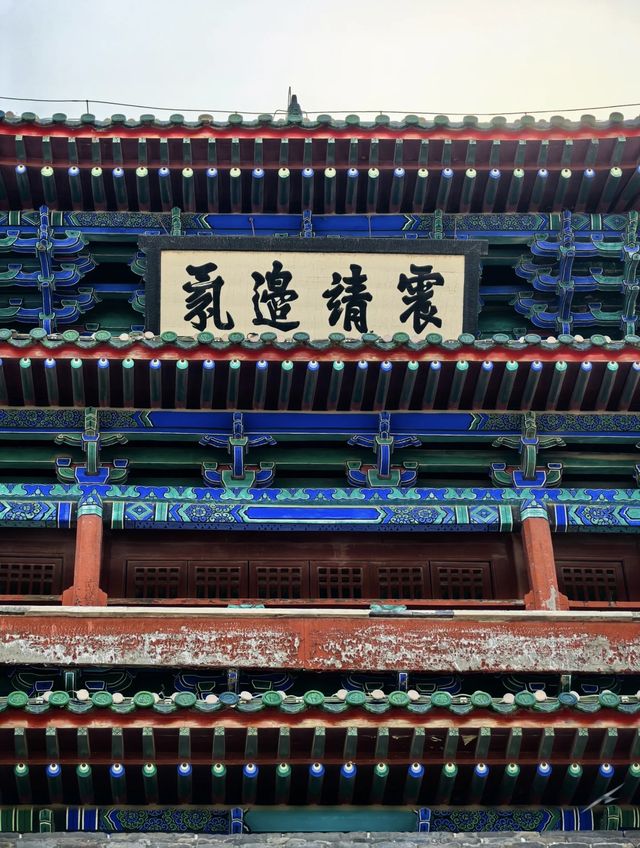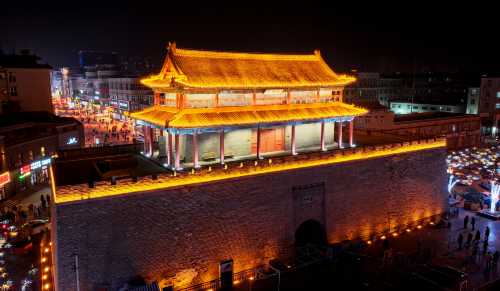Popular Trip Moments
Kongtong Mountain Nanny-Level Autumn Foliage Guide | Mountains Full of Breathtaking Red Leaves | Xue Ruyi | Warm Spring Tree Flower Beating Spectacular Night | Grassland Sky Road Potala Palace | Xueruyi Ski Resort Upgraded to Kick Off the New Season | The autumn in Zhangjiakou is like a painting at first glance | Reverse tourism wins big! After the National Day holiday, I took over the entire Taihang Mountains' red leaves in Fuping | Inner Mongolia's Hidden Autumn Secret Spot National Day Self-Drive Crowd-Avoidance Guide | Nodeng Ancient Town Guide|An Underrated Dali Secret, You Won't Want to Leave Once You Arrive! Nodeng is absolutely amazing! Who understands it? Once you visit, you'll become a fan instantly, | 【The autumn here has become legendary! Laozhanggou is a must-visit】 | Let's go to Zhangjiakou! A leisurely guide to grasslands, the Great Wall, and the Winter Olympics | 2 Days 1 Night Family Getaway Near Beijing|Sanggan River Resort, Autumn Parent-Child Trip is Simply Perfect! | Just got back, the autumn scenery at the Water Great Wall is absolutely stunning | Beijing Surroundings|A Stunning Autumn Viewing Spot That Looks a Lot Like "Arxan" | The post station where Empress Dowager Cixi stayed while fleeing! How many secrets does this ancient city hide? | Beijing Surroundings - Matianling Hiking to Enjoy Multi-layered Autumn Colors | The First Gate of the Great Wall! Climb this gate, and your life will be peaceful! | 3 Days 2 Nights in Hebei · Explore the "Secret Realm of the Capital Region" with a Cultural Light Travel for 3000 RMB | Yesterday I just went to the Baili Landscape Gallery, which is suitable for cycling, mountain running, and camping | Wanlong Ski Resort 2025-26 Season Opens on October 21 | Yunding Ski Park's snowmaking work has started | Explore Hebei Sanggan River Grand Canyon for 780 RMB|2 Days 1 Night Popular Travel Guide | A hidden gem just 3 hours' drive from Beijing, and I discovered it! | Beijing Surroundings | The autumn scenery here is truly legendary.. | The ultimate autumn viewing spot in Beijing suburbs! Real shots of Beiling Mountain's October autumn colors, with full hiking & self-driving guides | [Chongli's Little Switzerland] Complete Guide to Cuiyun Mountain: Your Ultimate Summer Escape & Skiing Guide! | Complete 2-Day Huai'an Guide 【A Soul-Stirring Journey to Huai'an】Only 1000 RMB to Master the 2-Day Itinerary! Come and Start Your Magical Adventure Now! 🚀 | A secret grassland paradise just 4 hours' drive from Beijing, Hebei, not in Europe | Beijing locals have kept this wild scenic spot hidden for 3 years, and now it’s exploded in popularity! 28 temples hang on a 500-meter cliff! | The ultimate autumn flower viewing near Beijing, 3 hours to a fairy tale world!
Recommended Attractions at Popular Destinations
Popular Attractions in Kuala Lumpur | Popular Attractions in Iguazu National Park(Argentina) | Popular Attractions in Walt Disney World Resort | Popular Attractions in Dubai | Popular Attractions in Paris | Popular Attractions in Los Angeles | Popular Attractions in Barcelona | Popular Attractions in Bangkok | Popular Attractions in Rome | Popular Attractions in London | Popular Attractions in Singapore | Popular Attractions in Osaka | Popular Attractions in New York | Popular Attractions in Zanzibar Island | Popular Attractions in Bali | Popular Attractions in Melbourne | Popular Attractions in Beijing | Popular Attractions in Shanghai | Popular Attractions in Sydney | Popular Attractions in Las Vegas | Popular Attractions in Tokyo | Popular Attractions in Chefchaouene | Popular Attractions in Kyoto | Popular Attractions in Phuket | Popular Attractions in West Lake | Popular Attractions in Chengdu | Popular Attractions in Florence | Popular Attractions in Madrid | Popular Attractions in Istanbul | Popular Attractions in Jungfrau Region
Popular Restaurants in Zhangjiakou
SHE HUI ZHU YI NONG GU XIAO YUAN | 东口码头1909(金鹰悦城店) | 青草堂度假营地(张北草原天路店)·餐饮部 | 草原生态度假酒店餐厅 | 三合泰饭庄 | XIANG YUAN LOU | 绿牛西餐厅·澳洲纯血和牛·牛排(冠垣广场店) | 丽垣涮肉(高新店) | Afangbashang Restaurant (zhangbei'er) | 烫皮山羊肉火锅店 | 禾河楼 | 村里香农家菜 | PI FU SHUAN ROU CHENG | 张北坝上草原聚汗轩农庄 | 东升涮肉旋转餐厅 | 海底捞火锅(容辰广场店) | 朝阳楼饭庄 | 彩丰小馆 | Afangbashang Restaurant (zhangbeizong) | 利世G9国际庄园·餐厅 | 福成肥牛(张家口桥东分店) | 肯德基(金鼎店) | 必胜客(百盛店) | Gabugabu (zhangjiakoushangfengguoji) | GA BU GA BU ZHANG GU KOU YIN ZUO CAN TING DIAN | Gabugabu (zhangjiakouhuailaiwanyue) | 阿尔卑斯小屋 | 白山青瓦 | 必胜客(宣化店) | Yijunge (weiduoliya)
Popular Ranked Lists
Popular Premium Hotels in Poyang | Top 50 Best Things to Do in Moscow | Top 10 Best Things to Do in Kamakura | Popular Premium Hotels in Zizhong | Popular Best Things to Do in Yangon | Popular Luxury Hotels Near Zoige | Top 10 Luxury Hotels in Berlin | Popular Premium Hotels in Pasig | Popular Best Things to Do in Boracay Island | Top 50 Must-Visit Restaurants in Yangzhou | Top 50 Best Things to Do in Prague | Top 50 Best Things to Do in Florence | Popular Luxury Hotels in Bora Bora | Top 50 Must-Visit Restaurants in Chaozhou | Top 50 Best Things to Do in Hanoi | Top 50 Must-Visit Restaurants in George Town | Popular Luxury Hotels in Shima | Popular Luxury Hotels in Copenhagen | Top 50 Must-Visit Restaurants in Chengdu | Popular Luxury Hotels in Mie Prefecture | Top 50 Must-Visit Restaurants in Madrid | Popular Premium Hotels in Taitung | Top 20 Best Things to Do in Santorini | Top 50 Must-Visit Restaurants in Dalat | Top 10 Must-Visit Restaurants in Bad Ischl | Top 20 Best Things to Do in Reykjavik | Top 50 Must-Visit Restaurants in Phuket | Top 10 Best Things to Do in Kathmandu | Popular Premium Hotels in Bole | Top 50 Must-Visit Restaurants in Hong Kong
About
Payment methods
Our partners
Copyright © 2025 Trip.com Travel Singapore Pte. Ltd. All rights reserved
Site Operator: Trip.com Travel Singapore Pte. Ltd.
Site Operator: Trip.com Travel Singapore Pte. Ltd.















